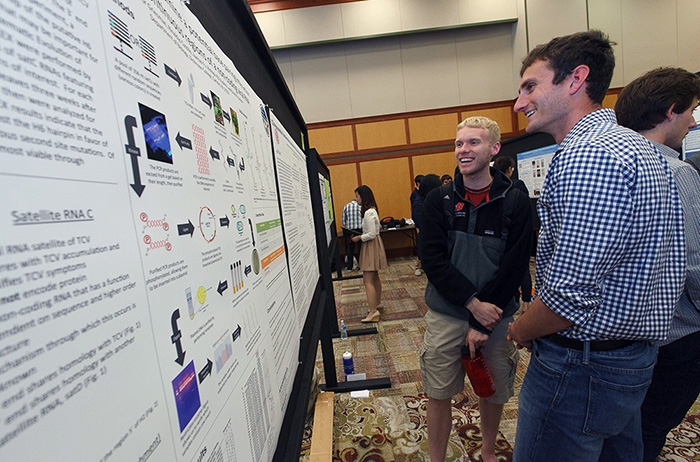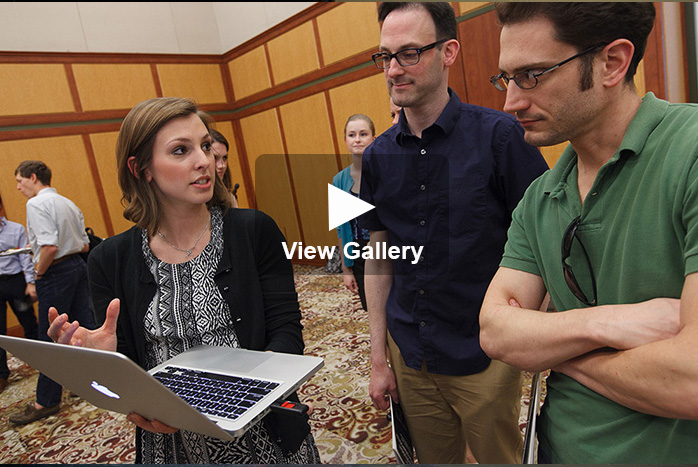One Room, 60 Discoveries

Photo by Carl Socolow '77.
Anniversary-year event brings 60 research projects to light
by MaryAlice Bitts-Jackson
In a spring semester chock full of scholarly presentations on campus, the Dickinson Science Student Research Symposium is the largest and most widely attended. And in its 30th anniversary year, it did not disappoint. Held April 15, the symposium brought together more than 100 students in 11 science disciplines—anthropology, biology, biochemistry & molecular biology, chemistry, computer science, earth sciences, environmental studies & environmental science, mathematics, neuroscience, physics & astronomy and psychology—to share what they’ve learned in the lab and in the field during 2014-15.
Throughout the event, student-researchers answered questions and, sometimes, gave live demonstrations, and at the presentation’s close, Tyler Ralston ’15, Julia Hayden ’16, Heather Geist ’15 and Mollyann Pais ’15 were recognized for exemplary work.
A double major in physics and mathematics, Ralston demonstrated a cost-effective, gridded solar-air heater with a high solar-to-thermal energy conversion efficiency, which he built and tested as part of research with Associate Professor of Physics Hans Pfister.
Hayden, a biochemistry & molecular biology major, presented a research project she secured at the University of Richmond during the summer after her freshman year, helping to develop a process to examine superfamily coverage by better annotating protein functions in a protein database.
“I learned a heck of a lot about proteins, but more important, I learned how to talk about my research to someone of any level of knowledge—a skill that, I believe, is critical,” she said, noting from experience that translating highly technical information to a general audience can be more challenging than presenting at a conference, where everyone has a deep base of knowledge.
Geist (bochemistry & molecular biology) agreed, and added that the chance to present on campus was especially gratifying.
“There’s great value in sharing what you've learned with your peers,” said Geist, who partnered with Pais to help further Charles A. Dana Professor of Biology John Henson’s research on the mechanisms underlying cell division in the early sea-urchin embryo. “I had a lot of interest in my poster, and it was fun and exciting to break the results down so that people who may never have seen something in sea urchin coelomocytes before could understand it.”
Learn more
- “Yeah, Science!”
- “Changing Lives and Loving It” (Heather Geist ’15)
- “Barks and Beetle Guts”
- “Where RuPaul Meets Amazing Man”
- “Primordial Kinship”
- “What’s That, Lassie?”
- Latest News
Published April 21, 2015
